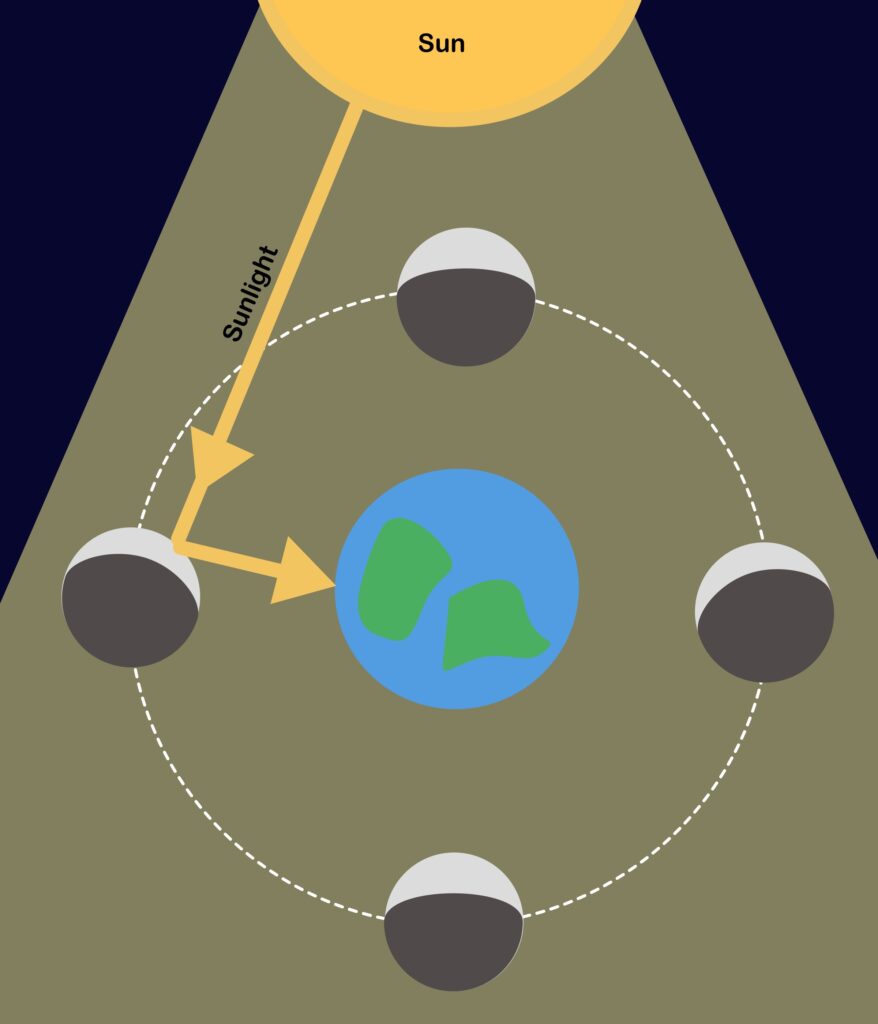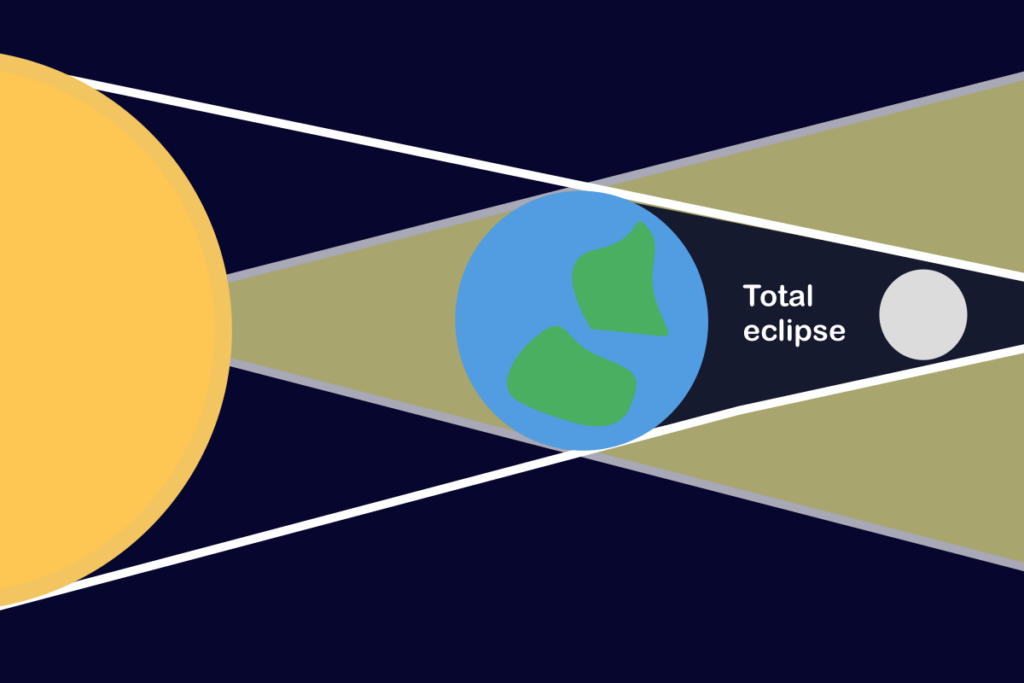Last Reviewed and Updated on July 29, 2022
Lighting up the night sky, the Moon is the brightest object in the sky at night. What causes the moon to shine, and how does it give us light at night? Why doesn’t the Moon shine during the day? Let’s find out!
What causes the Moon to shine?
The Moon itself does not produce its own light. The surface of the Moon reflects the light it gets from the Sun – so Moonlight is actually Sun’s light.
Depending on the position of the Earth, Moon, and the Sun, we will see a different Moon phase and different amount of light it shines.
You can see how this works in this simple diagram below.

But wait! Since Earth is in front of the Moon when the Moon shouldn’t it block the Sun? Shouldn’t Earth cast a shadow on the Moon? If you are asking yourself these questions, you are correct. When the Sun, the Earth, and the Moon are perfectly or closely aligned, the Earth blocks the sunlight, and we see a Lunar eclipse.

In order to have a Lunar eclipse, the Moon has to be full. But not every full Moon makes a Lunar eclipse; this only happens a few times per year.
Most of the time, when we observe a full Moon, the three aren’t perfectly aligned, as the moon’s orbit is tilted.

The tilted orbit is the reason the three aren’t perfectly aligned on every full Moon.
Does the Moon shine during the day?
Yes! You can often observe the moon during the day if the conditions are right. Depending on the position of the Sun, Earth, and the Moon, it can shine brightly enough to be seen during the daytime as well.
Most of the time, the sky is just too bright, and even though the Moon could be there, we can’t see it, but often, if the Moon is at the right position in the sky, it’s bright enough to shine through.
Love reading about space and the universe? Read our list of amazing facts about space.
